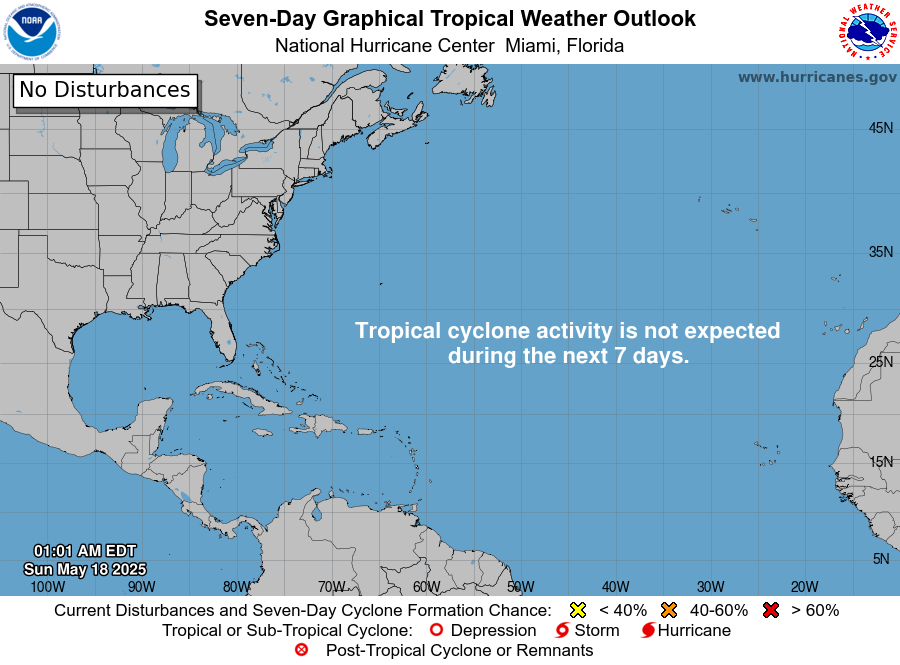#2866 Postby GCANE » Wed Oct 29, 2025 4:11 pm
Hurricane Melissa Discussion Number 34
NWS National Hurricane Center Miami FL AL132025
500 PM EDT Wed Oct 29 2025
Melissa showing some some signs of convective recovery after
weakening a little more from the land interaction with Cuba. After
looking quite ragged after emerging off Cuba, convection is
redeveloping on its upshear flank, and showing some signs of
wrapping around the center again. Aircraft fixes from the Air Force
Hurricane Hunter mission also show that the hurricane is beginning
to accelerate to the northeast. Peak 700 mb flight level winds were
87 kt both to the east and northeast of the center, and the minimum
central pressure was unchanged from this morning, at around 974 mb.
The mission also indicated a much larger eyewall with an eye
diameter of 40 n mi. Using a standard 0.9 reduction from the 700 mb
wind yields a maximum sustained wind of 80 kt this advisory, which
is also in between the TAFB and SAB subjective Dvorak intensity
estimates. Aircraft and scatterometer data were used to expand some
of the wind radii associated with Melissa this afternoon. Another
Air Force Reserve Hurricane Hunter mission is scheduled for this
evening.
The hurricane continues to gradually accelerate this afternoon, with
the motion currently estimated at 035/14 kt. Not much has changed
with the track reasoning this afternoon, as Melissa is beginning to
be captured in the flow between an amplified trough swinging into
the southeastern United States and a mid-level ridge centered to the
east of the tropical cyclone. This motion will bring Melissa across
the southeastern and central Bahamas though the evening. The track
models continue to remain clustered on the center of Melissa passing
just northwest of Bermuda late Thursday and Thursday night, though
the enlarging wind radii will likely cause hurricane conditions to
be experienced near or on the island. The track guidance this cycle
remains in fairly good agreement, and only subtle changes to the
track forecast were made this cycle, sticking close to a blend of
the HFIP Corrected Consensus Approach (HCCA) and Google DeepMind
ensemble mean (GDMI). It is also worth noting that the forecast
track does also take Melissa close to the southeastern tip of
Newfoundland, but as an post-tropical extratropical cyclone.
While Melissa has weakened substantially in the past 24 h due to
land interaction from the high terrain of Jamaica and Cuba, the
global and hurricane-regional models continue to suggest it has a
short-term window to re-intensify some while it remains over
sufficently warm 27-28 C sea-surface temperatures. While vertical
wind shear is starting to increase over the hurricane, it is in the
same direction as the current accelerating motion, and the current
satellite structure suggests that convection is not having any
issues wrapping around the circulation. In addition, the
accelerating forward motion might have the net effect of increasing
the maximum winds speeds on the southeastern flank of Melissa.
Finally, the hurricane finds itself positioned in the right entrance
region of a jet streak located over the northeastern United States,
which may aid in upper-level divergence over the system before the
shear becomes prohibitively strong. Thus, the NHC intensity forecast
does show some modest intensification over the next 24 h, and it is
worth nothing this forecast is a little lower than some of the
hurricane-regional models (HAFS-B/HWRF/HMON) that suggest it could
re-intensify into a major hurricane. Once the hurricane approaches
the north wall of the gulf stream in 48 h, extratropical transition
will likely be well underway, with most models suggesting it
completing this process between 48 to 60 h. The NHC intensity
forecast is a little on the high side of the overall guidance
envelope.
Key Messages:
1. Bahamas and the Turks and Caicos: Hurricane conditions,
life-threatening storm surge, and heavy rainfall are expected across
portions of the southeastern and central Bahamas through this
evening. Remain sheltered until local officials deem it safe to
venture out. Tropical storm conditions, heavy rains, and significant
storm surge are expected in the Turks and Caicos Islands through
this evening.
2. Bermuda: Hurricane conditions and heavy rainfall are expected in
Bermuda beginning late Thursday and continuing through Thursday
night.
3. Post-storm safety: Follow advice of local officials as you may
need to remain sheltered after the storm due to downed power lines
and flooded areas. Ensure generators are properly ventilated and
placed outside at least 20 feet away from dwellings and garages to
avoid carbon monoxide poisoning. During clean up, be careful when
using chainsaws and power tools. Drink plenty of water to avoid heat
exhaustion.
FORECAST POSITIONS AND MAX WINDS
0 likes








